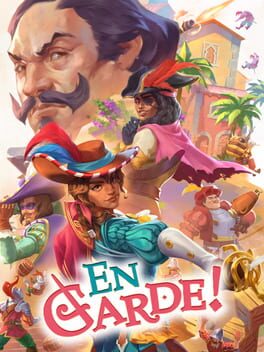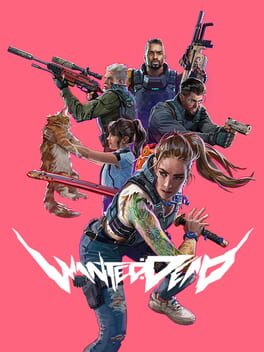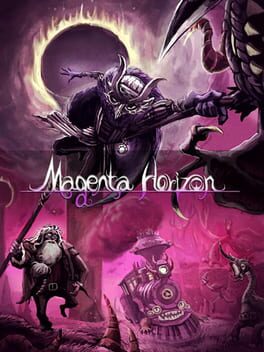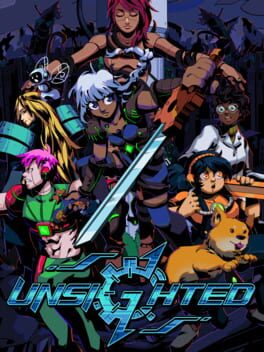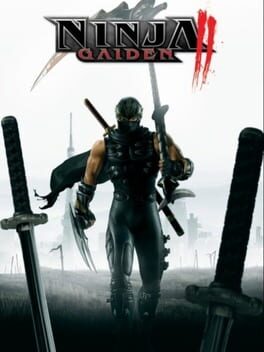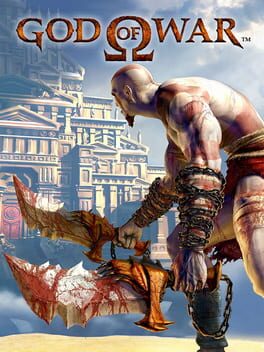2023
An heart on his sleeves, swashbuckling action adventure that is fun from start to finish. The simple combat system is elevated by putting the focus on arena design and the use of environmental hazard, instead of one on one duels. This creates a back and forth between using the environment to crowd control and isolate enemies, and then engaging with the remaining ones with a parry and dodge system similar to the Arkham games.
Arenas are generally well thought out, offering boxes to push into enemies, buckets to throw on their heads and chandelier waiting to be dropped.
The enemy roster is a bit lacking but what is there works well, with weak harassers, bomb throwing area controller and aggressive melee enemies and "elites".
Bosses are not an hoghlight, being simple hit and dodge affairs. Though the fact that they almost always are accompanied by adds, at least reinforces the focus on crowd controls.
The main campaign is short and to the point, with level secrets and challenges that incentivize replaying. There are some pacing issues however, with basic platforming session that, especially in stage 2, drag down the level design and don't offer anything substantial. It almost feels that they were put in out of an obligation to have breather section between combat encounter, without thinking abou the overall pacing.
Where the game really shines however is in the Arena Mode. Here enemy compositions and crowd control options are at their best, and positive and negative modifiers push you to experiment and try different approaches. The last encounter of the higher difficulty arena being an highlight.
The game isn't the deepest action title and it has been clearly made on a budget. A better focus on pacing would have made the campaign more interesting to replay, a couple more enemies would have improved the enemy roster and some more varied hit reaction would have made the crowd control system even more engaging.
With that said what is here is solid and creates a game that delivers on his premise and is a ton of fun to play. And sometimes that is all you need.
Arenas are generally well thought out, offering boxes to push into enemies, buckets to throw on their heads and chandelier waiting to be dropped.
The enemy roster is a bit lacking but what is there works well, with weak harassers, bomb throwing area controller and aggressive melee enemies and "elites".
Bosses are not an hoghlight, being simple hit and dodge affairs. Though the fact that they almost always are accompanied by adds, at least reinforces the focus on crowd controls.
The main campaign is short and to the point, with level secrets and challenges that incentivize replaying. There are some pacing issues however, with basic platforming session that, especially in stage 2, drag down the level design and don't offer anything substantial. It almost feels that they were put in out of an obligation to have breather section between combat encounter, without thinking abou the overall pacing.
Where the game really shines however is in the Arena Mode. Here enemy compositions and crowd control options are at their best, and positive and negative modifiers push you to experiment and try different approaches. The last encounter of the higher difficulty arena being an highlight.
The game isn't the deepest action title and it has been clearly made on a budget. A better focus on pacing would have made the campaign more interesting to replay, a couple more enemies would have improved the enemy roster and some more varied hit reaction would have made the crowd control system even more engaging.
With that said what is here is solid and creates a game that delivers on his premise and is a ton of fun to play. And sometimes that is all you need.
2023
Abysmal enemy design, with brain dead opponents that do nothing more interesting than rushing you or waiting around; lacking player's kit with moves that don't affect enemy state in any meaningful way locked behind a poorly thought out upgrade system. Adding to this the game also has pace-breaking rhythm mini games that consist of terrible tracks that repeat on loop most of the time.
If this wasn't enough the game is also buggy and broken, with audio and visual issues, enemies voice lines layering on top of each other, frequent crashing and freezes.
I'm convinced it's just an elaborate money laundering scheme at this point.
If this wasn't enough the game is also buggy and broken, with audio and visual issues, enemies voice lines layering on top of each other, frequent crashing and freezes.
I'm convinced it's just an elaborate money laundering scheme at this point.
2021
Review written after around 40 hours, SSS ranked all levels of the Act 1 demo.
Magenta Horizon enemy roster is extremely well thought out. They are aggressive, come in high numbers and they all feel like pieces of a greater whole. What Magenta does well is that it doesn’t forget that enemies are not good just in a vacuum but work better in the interplay between each other. Enemy compositions are always engaging and make each of the chess pieces shine. They control space in different ways, hit you with projectiles or obstruct movement by sheer size alone. They also come in combinations that bolsters each other covering up weaknesses.
Big bats are easy to stagger but shoot out projectile even after you bring them to the ground, small fodder enemies come in high numbers and and can easily overwhelm you on the ground, Lobsters physically block you impeding your mobility, ranged enemies need to be dealt with fasts and high tier enemies work well both on the ground and on the air, can create hazard or support each others.The game builds on this more and more with arenas becoming way more dense of enemies, creating a system that is both chaotic and intentional, forcing you to adapt, make split second decisions and constantly re-evaluate target prioritization.
The enemy that most exemplifies this is the Propeller Demon, a small helicopter that damages and staggers you if you come in contact with its propeller blade. Alone they are easily dealt with by attacking them from below. However in combination with other enemies they become a priority as they control air space forcing you to rethink the way you move and position yourself.
The focus on enemy design doesn’t mean the player’s kit is lacking. Gretel has a lot of different moves both in the air and on the ground; strings aren’t long, instead you have different attacks that all feel distinct, useful and flow into each other seamlessly. The option while on the air especially shines through, inspired by Hollow Knight, you can pogo enemies to stay in the air but Magenta also adds two more options that open up aerial play even more. The diagonal dive builds on the pogo by having similar properties and opening up both more mobility and more approach options. The hook, instead, doubles as both an offensive and defensive tool pulling you towards enemies and letting you pass through some of them creating yet another approach option. While the lack of a movelist can be frustrating it also makes discovering new moves more organic and interesting, it will most likely be patched in later tho.
A sub weapon system supports the melee, each with their own meters that recharge by hitting enemies. In act 1 there are four of them, a simple projectile, a grenade, a spike attack and a propeller blades that work similar to a boomerang.
They also work in combination: hit a grenade with a projectile and it will create a bigger AOE explosion staggering enemies in his path, skewer the propeller blade with a well timed spike and it will spin in place dealing heavy damage all around.
As a way to customize your playstyle you also have necklaces pieces you can equip in the style of Hollow Knight that modify your moves, give you more offensive and defensive options, make moves behave differently depending on the combo counter and so on.
The slots are limited but the low number of options at the moment don’t create meaningful choices, but this will most likely change as the game gets updated.
This offensive option is also supplemented by an incredibly smart healing system, instead of using consumable items, by hitting enemies you increase a meter that gives you up to 3 charges of a healing grenade. Toss it to an enemy and for a time any damage you do to it will spawn healing orbs. Obviously this promotes aggressive play and makes it so you always need to take a risk if you want to replenish your health, but the true beauty of the system comes from the more offensive application . Equip a specific necklace piece and healing bomb will start to deal heavy stagger to enemies,you can now using it proactively taking a risk by spending a charge when you don’t need to heal , stopping a group of enemies charging at you, creating space in a chaotic situation or setting up for a combo
The same thought and care is put on the defensive options you have at your disposal together with the aforementioned pogo, dive and hook you also have an iframe dash. Dodging itself can’t be done without thought, larger or blocking enemies can’t be dodge through, once again controlling space in an interesting way.
The breadth of options means that any single one is never over centralized even more so thanks to the importance of correct positioning. Where and when you position yourself is paramount both for avoiding and punishing enemies. Harder enemies are designed with this in mind having attacks dependent on your position in relation to them that can’t be dodged on reaction alone.
This is even more apparent during boss fights.
All of the fights are engaging and fun to fight, testing you in different ways and most of the time having to split your attention to different targets playing to the system strengths.
Bulcher the train, mascot of the game, is a favorite of mine, having you continuously rethink your approach as you jump over him, avoid his charges and position yourself fishing specific attacks, all in a split seconds situation all the while dealing with propeller blades that control aerial space. Reminiscent of classic Monster Hunter is a robust system that sees the boss stagger once a secondary bar is depleted, timing your attack correctly will even make you stop a charging train.
Of the entire boss roster only one of them feels on the more mediocre side, mainly ‘cause it’s easily dealt with by just keeping in the air and doesn’t play in the controlled chaos as much as it could.
The arena design doesn’t disappoint either. Especially on the higher difficulties, Magenta plays with interesting ideas. Instead of simple carenas, you also have cramped spaces, environmental hazards and small platforms over spikes with aerial enemies forcing you to stay on the move. Bolstering the already incredible enemy design even more and creating always fresh situations.
These arenas together with the non combat areas are also fun to traverse. Levels are simple mazes that offer choices in how to route, together with cool optional fights and hidden items.
While the art direction is both unique and well made, the levels can be confusing to traverse at time, routing the level to obtain a better time rank is fun however so some frustration at first does increase the overall enjoyments on replays.
The ranking system frames the entire experience. Other than on time spent, it also ranks your style points and deaths. Interestingly damage taken is not ranked and this works twofold.
It makes it possible to keep enemy count and aggression high as taking damage becomes expected.
It makes going for high ranks not frustrating at all as minor mistakes don’t force you to reset each time, instead rewarding you for your mastery of the combat system and level. With the added bonus of not making, as many games do, the health and healing system obsolete when going for SSS.
If it isn’t clear enough I’m enamored with the game and the potential it has and I urge you to try it out . The demo is free on both Itch and Steam, and it’s rare to see such well designed passion project type of action games with such level of polish and design, especially from a solo developer. So download the demon, and go enjoy the controlled chaos of a dance in purple.
Magenta Horizon enemy roster is extremely well thought out. They are aggressive, come in high numbers and they all feel like pieces of a greater whole. What Magenta does well is that it doesn’t forget that enemies are not good just in a vacuum but work better in the interplay between each other. Enemy compositions are always engaging and make each of the chess pieces shine. They control space in different ways, hit you with projectiles or obstruct movement by sheer size alone. They also come in combinations that bolsters each other covering up weaknesses.
Big bats are easy to stagger but shoot out projectile even after you bring them to the ground, small fodder enemies come in high numbers and and can easily overwhelm you on the ground, Lobsters physically block you impeding your mobility, ranged enemies need to be dealt with fasts and high tier enemies work well both on the ground and on the air, can create hazard or support each others.The game builds on this more and more with arenas becoming way more dense of enemies, creating a system that is both chaotic and intentional, forcing you to adapt, make split second decisions and constantly re-evaluate target prioritization.
The enemy that most exemplifies this is the Propeller Demon, a small helicopter that damages and staggers you if you come in contact with its propeller blade. Alone they are easily dealt with by attacking them from below. However in combination with other enemies they become a priority as they control air space forcing you to rethink the way you move and position yourself.
The focus on enemy design doesn’t mean the player’s kit is lacking. Gretel has a lot of different moves both in the air and on the ground; strings aren’t long, instead you have different attacks that all feel distinct, useful and flow into each other seamlessly. The option while on the air especially shines through, inspired by Hollow Knight, you can pogo enemies to stay in the air but Magenta also adds two more options that open up aerial play even more. The diagonal dive builds on the pogo by having similar properties and opening up both more mobility and more approach options. The hook, instead, doubles as both an offensive and defensive tool pulling you towards enemies and letting you pass through some of them creating yet another approach option. While the lack of a movelist can be frustrating it also makes discovering new moves more organic and interesting, it will most likely be patched in later tho.
A sub weapon system supports the melee, each with their own meters that recharge by hitting enemies. In act 1 there are four of them, a simple projectile, a grenade, a spike attack and a propeller blades that work similar to a boomerang.
They also work in combination: hit a grenade with a projectile and it will create a bigger AOE explosion staggering enemies in his path, skewer the propeller blade with a well timed spike and it will spin in place dealing heavy damage all around.
As a way to customize your playstyle you also have necklaces pieces you can equip in the style of Hollow Knight that modify your moves, give you more offensive and defensive options, make moves behave differently depending on the combo counter and so on.
The slots are limited but the low number of options at the moment don’t create meaningful choices, but this will most likely change as the game gets updated.
This offensive option is also supplemented by an incredibly smart healing system, instead of using consumable items, by hitting enemies you increase a meter that gives you up to 3 charges of a healing grenade. Toss it to an enemy and for a time any damage you do to it will spawn healing orbs. Obviously this promotes aggressive play and makes it so you always need to take a risk if you want to replenish your health, but the true beauty of the system comes from the more offensive application . Equip a specific necklace piece and healing bomb will start to deal heavy stagger to enemies,you can now using it proactively taking a risk by spending a charge when you don’t need to heal , stopping a group of enemies charging at you, creating space in a chaotic situation or setting up for a combo
The same thought and care is put on the defensive options you have at your disposal together with the aforementioned pogo, dive and hook you also have an iframe dash. Dodging itself can’t be done without thought, larger or blocking enemies can’t be dodge through, once again controlling space in an interesting way.
The breadth of options means that any single one is never over centralized even more so thanks to the importance of correct positioning. Where and when you position yourself is paramount both for avoiding and punishing enemies. Harder enemies are designed with this in mind having attacks dependent on your position in relation to them that can’t be dodged on reaction alone.
This is even more apparent during boss fights.
All of the fights are engaging and fun to fight, testing you in different ways and most of the time having to split your attention to different targets playing to the system strengths.
Bulcher the train, mascot of the game, is a favorite of mine, having you continuously rethink your approach as you jump over him, avoid his charges and position yourself fishing specific attacks, all in a split seconds situation all the while dealing with propeller blades that control aerial space. Reminiscent of classic Monster Hunter is a robust system that sees the boss stagger once a secondary bar is depleted, timing your attack correctly will even make you stop a charging train.
Of the entire boss roster only one of them feels on the more mediocre side, mainly ‘cause it’s easily dealt with by just keeping in the air and doesn’t play in the controlled chaos as much as it could.
The arena design doesn’t disappoint either. Especially on the higher difficulties, Magenta plays with interesting ideas. Instead of simple carenas, you also have cramped spaces, environmental hazards and small platforms over spikes with aerial enemies forcing you to stay on the move. Bolstering the already incredible enemy design even more and creating always fresh situations.
These arenas together with the non combat areas are also fun to traverse. Levels are simple mazes that offer choices in how to route, together with cool optional fights and hidden items.
While the art direction is both unique and well made, the levels can be confusing to traverse at time, routing the level to obtain a better time rank is fun however so some frustration at first does increase the overall enjoyments on replays.
The ranking system frames the entire experience. Other than on time spent, it also ranks your style points and deaths. Interestingly damage taken is not ranked and this works twofold.
It makes it possible to keep enemy count and aggression high as taking damage becomes expected.
It makes going for high ranks not frustrating at all as minor mistakes don’t force you to reset each time, instead rewarding you for your mastery of the combat system and level. With the added bonus of not making, as many games do, the health and healing system obsolete when going for SSS.
If it isn’t clear enough I’m enamored with the game and the potential it has and I urge you to try it out . The demo is free on both Itch and Steam, and it’s rare to see such well designed passion project type of action games with such level of polish and design, especially from a solo developer. So download the demon, and go enjoy the controlled chaos of a dance in purple.
2021
This game was a surprise, tried it on Gamepass and I immediatly fell in love. A great mix of 2D Zelda and a Metroidvania with a special time limit gimmick.
Tha map is really open from the start; using good movement and knowing what to craft makes you able to sequence break and do almost everything in the order you prefer (and the game even rewards you for it). Puzzles are interesting but not too hard, while secrets are few but impactful.
The combat is fun and impactful, however the parry system is way too overcentralized. The game gives you a ton of different weapons to play with,but once you learn how to parry and capitalize on the free critical it gives you, there is no reason to use anything else but the Axe.
Unfortunately the central gimmick of the game is not as impactful as it should be. Every character (main character included) has a time limit that dooms it to lose its mind once it reaches zero (which translate in a game over or the loss of an npc). This time limit can be increased using consumable items that you find around the map. Everytime you give this item to an NPC you'll get an heart, fill all the hearts and you get a special reward.
The problem is that once you have obtained this reward the NPC becomes useless and there is no reason to try and save it from certain doom outside of seeing a 2 second scene in the ending slideshow.
Even with a weak central gimmick, Unsighted, is still incredibly solid and the fun and rewarding exploration makes it fantastic from start to finish. While the open maps and multiple ending makes the game a treat to replay.
Tha map is really open from the start; using good movement and knowing what to craft makes you able to sequence break and do almost everything in the order you prefer (and the game even rewards you for it). Puzzles are interesting but not too hard, while secrets are few but impactful.
The combat is fun and impactful, however the parry system is way too overcentralized. The game gives you a ton of different weapons to play with,but once you learn how to parry and capitalize on the free critical it gives you, there is no reason to use anything else but the Axe.
Unfortunately the central gimmick of the game is not as impactful as it should be. Every character (main character included) has a time limit that dooms it to lose its mind once it reaches zero (which translate in a game over or the loss of an npc). This time limit can be increased using consumable items that you find around the map. Everytime you give this item to an NPC you'll get an heart, fill all the hearts and you get a special reward.
The problem is that once you have obtained this reward the NPC becomes useless and there is no reason to try and save it from certain doom outside of seeing a 2 second scene in the ending slideshow.
Even with a weak central gimmick, Unsighted, is still incredibly solid and the fun and rewarding exploration makes it fantastic from start to finish. While the open maps and multiple ending makes the game a treat to replay.
2008
For better or for worse there is no other game like Ninja Gaiden 2. Tomonobu Itagaki, the game director,is famous for being kinda of a rockstar, doing what he thinks is cool even going against standard convetions to create games that are challenging and are not afraid to punish the player hubris.
This game is Itagaki at its most pure.
Incredibly fast paced with hordes of incredibly aggressive enemies that never give you time to breath.
Section with respawning soldier that shower you with rockets just like in a NES games and arenas full of neverending ninjas.
If you want to survive you'll need to be even more aggressive and master the combat system, knowing when to chain iframes to maintain your offense, when to use special execution, called Obliteration Techniques, to kill your foes fast and efficiently.
Itakagi at its finest is not always a good thing tho. Glitches and input drops are frequent, some section, enemies and bosses are infuriating and the game is not afraid to be a bit unfair at times and push you to your limits. And yet all of this flaws don't manage to bring the fantastic combat down.
Nothing will ever top the level of adrenaline that fighting hordes of Ninja that pelt you with incendiary shuriken all while you are trying to kill Fiend Mages and Archers that try to shoot you down. Dying and trying again until you finally manage to "die slower than you enemies" and survive to be ready to do it all again in the next fight.
This game is Itagaki at its most pure.
Incredibly fast paced with hordes of incredibly aggressive enemies that never give you time to breath.
Section with respawning soldier that shower you with rockets just like in a NES games and arenas full of neverending ninjas.
If you want to survive you'll need to be even more aggressive and master the combat system, knowing when to chain iframes to maintain your offense, when to use special execution, called Obliteration Techniques, to kill your foes fast and efficiently.
Itakagi at its finest is not always a good thing tho. Glitches and input drops are frequent, some section, enemies and bosses are infuriating and the game is not afraid to be a bit unfair at times and push you to your limits. And yet all of this flaws don't manage to bring the fantastic combat down.
Nothing will ever top the level of adrenaline that fighting hordes of Ninja that pelt you with incendiary shuriken all while you are trying to kill Fiend Mages and Archers that try to shoot you down. Dying and trying again until you finally manage to "die slower than you enemies" and survive to be ready to do it all again in the next fight.
2007
In a lot of ways GoW 2 is a perfect sequel. It builds from the first game foundation while adding more enemies, more weapons and by focusing even more on the great grab system that makes the series so unique.
However, it also loses some of the charm and polish of the original title. The pacing is not as tight as its predecessor, bosses are more plentiful but still as mediocre as the ones in the first title and it loses some of the exploration aspects. Still a fantastic action game ,but I'll always prefer the first one.
However, it also loses some of the charm and polish of the original title. The pacing is not as tight as its predecessor, bosses are more plentiful but still as mediocre as the ones in the first title and it loses some of the exploration aspects. Still a fantastic action game ,but I'll always prefer the first one.
2005
The best way to describe this game is "forgotten gem".
Even before the reboot everyone, even the developers, was too fast to shove it under the rug as the "stupid, immature game", but it's much more than that.
The combat, while it appears simple, hides a layer of depth, thanks to the fantastic grab system. Bring a Minotaur to the air and chain throw him, grab a soldier and use it as a projectile to hit other enemies or use your kit in a clever way to "ring out" foes.
All of this while exploring an incredibly well designed set of levels with superb pacing, with a game designer that seems to perfectly know when to put you against a gauntlet or make you cool down with a puzzle or a set piece. Setpieces that work well because they never strip you of control, and even when deviating from the standard combat, having you scale a wall or climb a rope, they still reinforce the fundamentals of its design.
The way the game lends itself to challenge runs, mainly no upgrade runs, wraps everything up.
The game definitely has its problems, first of all the uninspired bosses and some underwater sections, but I urge you to rediscover this forgotten classic, you will discover that it goes way beyond it's "square, square, triangle" infamy.
Even before the reboot everyone, even the developers, was too fast to shove it under the rug as the "stupid, immature game", but it's much more than that.
The combat, while it appears simple, hides a layer of depth, thanks to the fantastic grab system. Bring a Minotaur to the air and chain throw him, grab a soldier and use it as a projectile to hit other enemies or use your kit in a clever way to "ring out" foes.
All of this while exploring an incredibly well designed set of levels with superb pacing, with a game designer that seems to perfectly know when to put you against a gauntlet or make you cool down with a puzzle or a set piece. Setpieces that work well because they never strip you of control, and even when deviating from the standard combat, having you scale a wall or climb a rope, they still reinforce the fundamentals of its design.
The way the game lends itself to challenge runs, mainly no upgrade runs, wraps everything up.
The game definitely has its problems, first of all the uninspired bosses and some underwater sections, but I urge you to rediscover this forgotten classic, you will discover that it goes way beyond it's "square, square, triangle" infamy.
